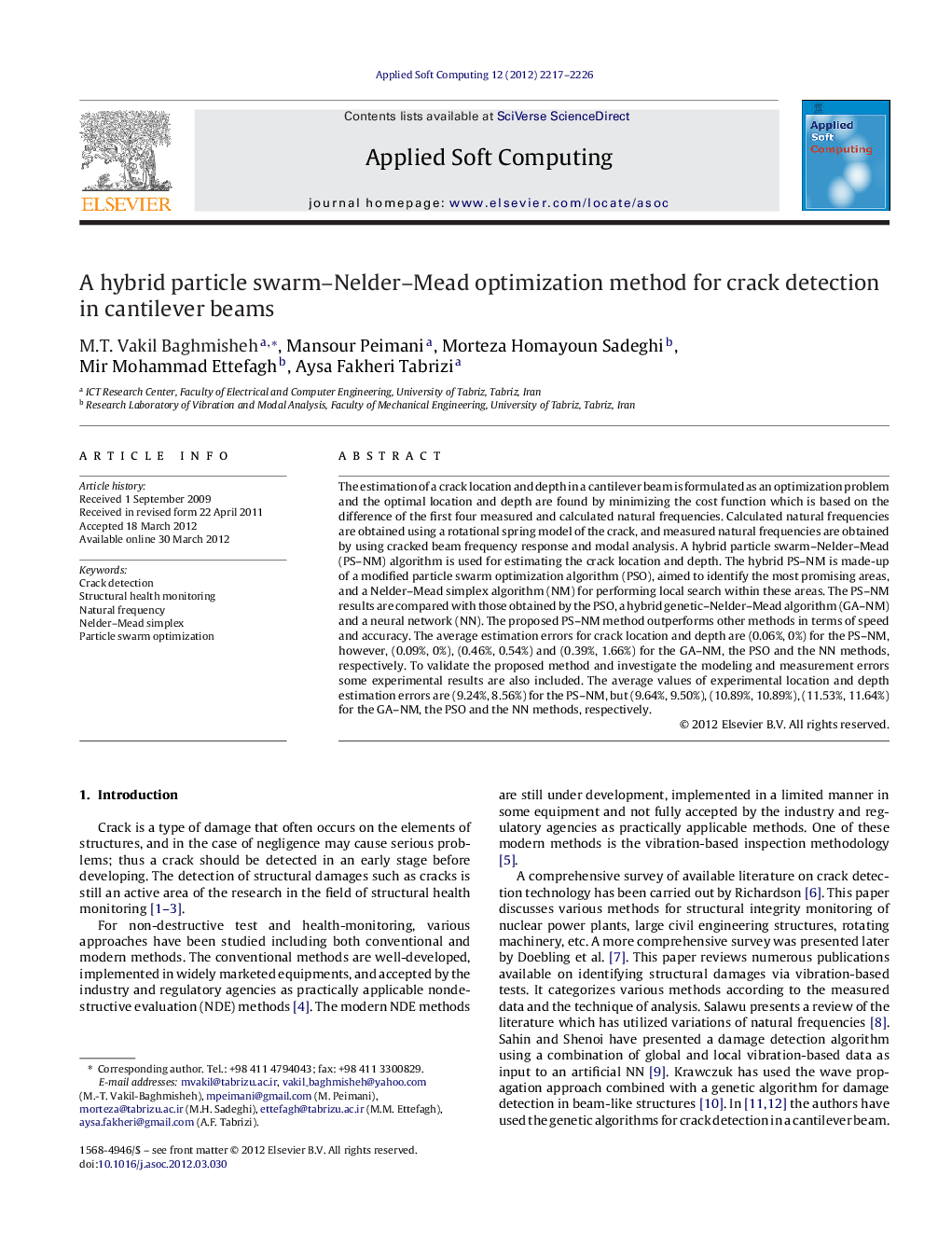| Article ID | Journal | Published Year | Pages | File Type |
|---|---|---|---|---|
| 496347 | Applied Soft Computing | 2012 | 10 Pages |
The estimation of a crack location and depth in a cantilever beam is formulated as an optimization problem and the optimal location and depth are found by minimizing the cost function which is based on the difference of the first four measured and calculated natural frequencies. Calculated natural frequencies are obtained using a rotational spring model of the crack, and measured natural frequencies are obtained by using cracked beam frequency response and modal analysis. A hybrid particle swarm–Nelder–Mead (PS–NM) algorithm is used for estimating the crack location and depth. The hybrid PS–NM is made-up of a modified particle swarm optimization algorithm (PSO), aimed to identify the most promising areas, and a Nelder–Mead simplex algorithm (NM) for performing local search within these areas. The PS–NM results are compared with those obtained by the PSO, a hybrid genetic–Nelder–Mead algorithm (GA–NM) and a neural network (NN). The proposed PS–NM method outperforms other methods in terms of speed and accuracy. The average estimation errors for crack location and depth are (0.06%, 0%) for the PS–NM, however, (0.09%, 0%), (0.46%, 0.54%) and (0.39%, 1.66%) for the GA–NM, the PSO and the NN methods, respectively. To validate the proposed method and investigate the modeling and measurement errors some experimental results are also included. The average values of experimental location and depth estimation errors are (9.24%, 8.56%) for the PS–NM, but (9.64%, 9.50%), (10.89%, 10.89%), (11.53%, 11.64%) for the GA–NM, the PSO and the NN methods, respectively.
Graphical abstractFigure optionsDownload full-size imageDownload as PowerPoint slideHighlights► Crack detection in a cantilever beam is formulated as an optimization problem. ► A hybrid PSO–NM made-up of a modified particle swarm algorithm and a Nelder–Mead simplex algorithm is introduced. ► The proposed method outperforms three other methods, i.e., a PSO, a hybrid genetic–NM algorithm and a neural network. ► The obtained results are encouraging, and pave the way for further tests on complicated models using heuristic methods.
